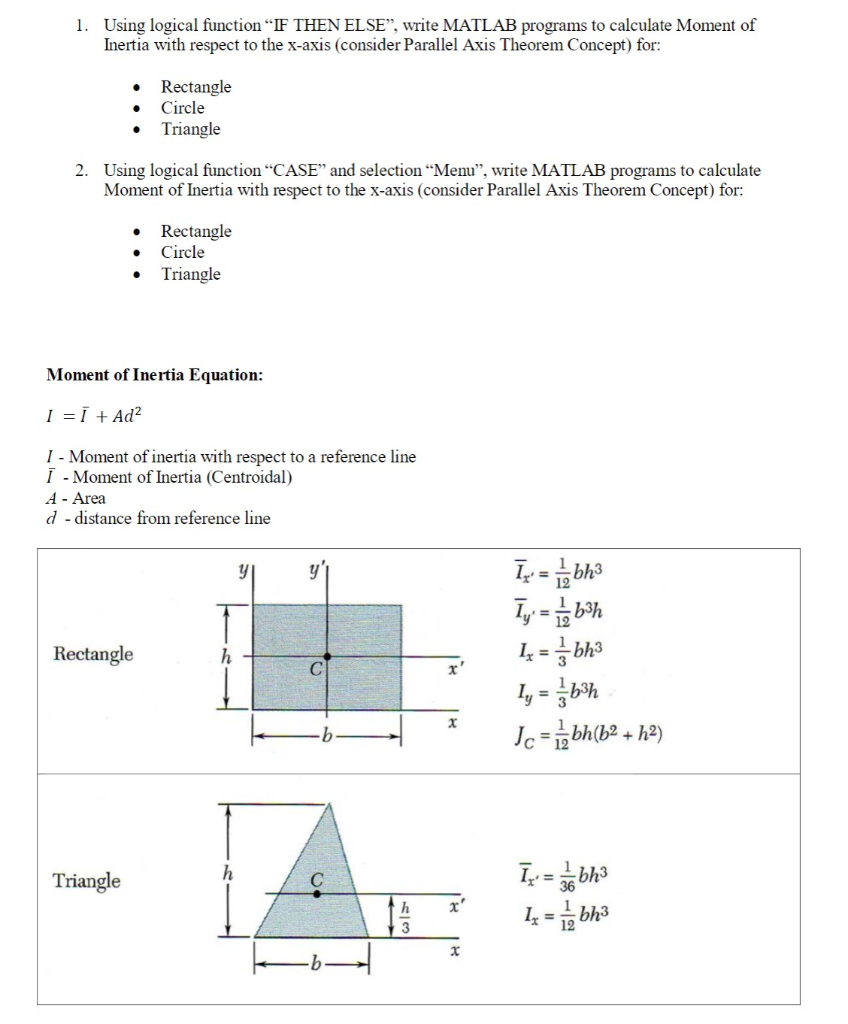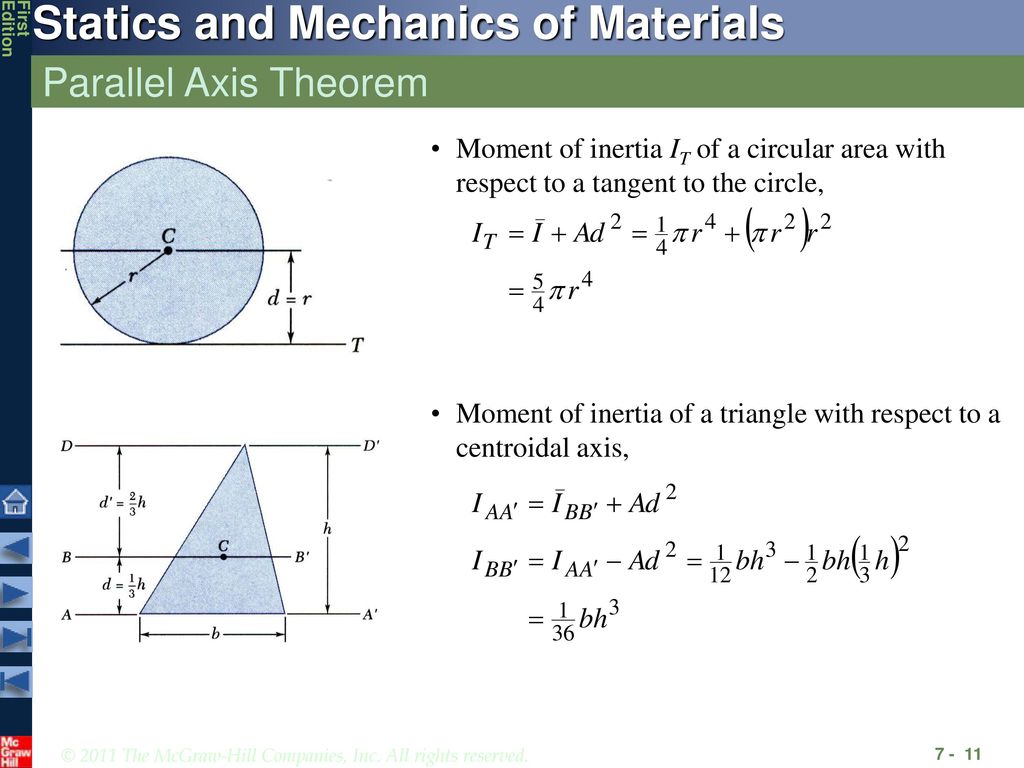
This may be a vertical distance, a horizontal distance, or a diagonal depending on the axis the moment or inertia is about. The area or mass terms simply represent the area or mass of the part you are looking at, while the distance (r) represents the distance we are moving the axis we are taking the moment of inertia about.

This adjustment process with the equations above is the parallel axis theorem. From this minimum, or unadjusted value, we can find the moment of inertia value about any point I p by adding an an adjustment factor equal to the area times distance squared for area moments of inertia, or mass times distance squared for mass moments of inertia. This minimum, which we will call I c (area momen of inertia) or I G (mass moment of inertia), is the value we will look up in our moment of inertia table. It will always be at a minimum when we take the moment of inertia about the centroid, or an axis going through the centroid (area moment of inertia), and minimum about an axis going through the centre of gravity (mass moment of inertia). Though this complicates our analysis, the nice thing is that the change in the moment of inertia is predicable. These distances will be at a minimum at the centroid and will get larger as we start further from the centroid. The distances used in our moment integrals depends on the point or axis chosen. Specifically, the further we move from the centroid, the larger the average distances become. If we pick a different point or axis to take the moment of inertia about, then on average all the distances in our moment integral will be a little bit bigger. Because the centroid of a shape is the geometric center of an area or volume, the average distance to any one point in a body is at a minimum. We then measured all distances from that point or axis, where the distances were the moment arms in our moment integrals.

When we calculated the area and mass moments of inertia via integration, one of the first things we had to do was to select a point or axis we were going to take the moment of inertia about. Once the moments of inertia are adjusted with the Parallel Axis Theorem, then we can add them together using the method of composite parts. We will use something called the Parallel Axis Theorem to adjust the moments of inertia so that they are all taken about some standard axis or point.

Because each part has its own individual centroid coordinate, we cannot simply add these numbers. The moments of inertia in the table are generally listed relative to that shape's centroid though. Moments of inertia for the parts of the body can only be added when they are taken about the same axis. As discussed on the previous pages, the area and mass moments of inertia are dependent upon the chosen axis of rotation. This method is known as the method of composite parts.Ī key part to this process that was not present in centroid calculations is the adjustment for position. In this method we will break down a complex shape into simple parts, look up the moments of inertia for these parts in a table, adjust the moments of inertia for position, and finally add the adjusted values together to find the overall moment of inertia.

In the field of structural engineering, the second moment of area of the cross-section of a beam is an important property used in the calculation of the beam's deflection and the calculation of stress caused by a moment applied to the beam.Method of Composite Parts for Moments of Inertia and the Parallel Axis TheoremĪs an alternative to integration, both area and mass moments of inertia can be calculated via the method of composite parts, similar to what we did with centroids. Its unit of dimension when working with the International System of Units is meters to the fourth power, m4. In both cases, it is calculated with a multiple integral over the object in question. The second moment of area is typically denoted with either anįor an axis that lies in the plane or with aįor an axis perpendicular to the plane. The 2nd moment of area, also known as moment of inertia of plane area, area moment of inertia, or second area moment, is a geometrical property of an area which reflects how its points are distributed with regard to an arbitrary axis.


 0 kommentar(er)
0 kommentar(er)
